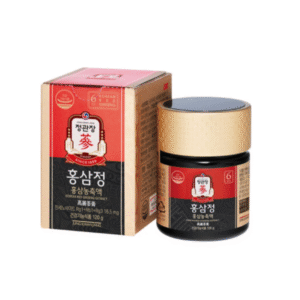In a world where convenience often overshadows nutrition, high cholesterol has become a quiet yet persistent threat. It builds slowly, layer by layer, in the arteries — often unnoticed until it’s too late.
Yet, nature offers subtle allies in restoring balance. Among them, few are as time-honored and scientifically celebrated as Korean Red Ginseng (Panax ginseng Meyer) — a root that not only energizes the body but also supports healthy cholesterol levels and cardiovascular wellness from within.
🌿 Understanding Cholesterol and Balance
Cholesterol is often misunderstood. It’s not inherently bad; in fact, it’s vital for cell membranes, hormone production, and vitamin D synthesis.
The problem arises when LDL (“bad”) cholesterol oxidizes and builds up in artery walls, while HDL (“good”) cholesterol declines — tipping the balance toward atherosclerosis, or arterial hardening.
This imbalance is often triggered by poor diet, stress, lack of exercise, and inflammation — factors that together form the foundation of modern metabolic syndrome.
And this is precisely where Korean Red Ginseng finds its relevance — as a natural harmonizer for both the heart and lipid metabolism.
💓 The Science of Ginseng and Lipid Regulation
Korean Red Ginseng is a natural adaptogen, meaning it helps the body maintain physiological equilibrium under stress. But beyond stress resilience, its bioactive compounds — especially ginsenosides Rb1, Rg1, and Rg3 — have demonstrated potent hypolipidemic (cholesterol-lowering) properties.
🧬 Mechanisms at Work:
- Regulation of Lipid Metabolism:
Ginsenosides activate AMP-activated protein kinase (AMPK), a key enzyme that enhances fat oxidation and reduces lipid synthesis in the liver. - Reduction of LDL and Triglycerides:
Multiple studies show red ginseng extract lowers LDL cholesterol and triglyceride levels while maintaining or even increasing HDL levels. - Inhibition of Lipid Peroxidation:
As a powerful antioxidant, ginseng prevents the oxidation of LDL particles — the primary trigger for plaque formation in arteries. - Enhancement of Endothelial Function:
Ginseng boosts nitric oxide (NO) production, improving blood vessel elasticity and reducing the risk of vascular stiffness associated with hyperlipidemia.
In short, Korean Red Ginseng doesn’t just lower numbers; it rebalances the body’s lipid ecosystem — safely, holistically, and sustainably.
🔬 Evidence from Modern Research
The cardiovascular effects of Korean Red Ginseng are now supported by a growing body of clinical data:
- **A study published in Nutrition, Metabolism & Cardiovascular Diseases (2019) ** found that red ginseng extract significantly reduced total cholesterol and LDL levels in adults with borderline hyperlipidemia after 8 weeks of use.
- In a trial conducted by Chungnam National University (Korea), ginseng supplementation improved HDL levels and decreased triglycerides, showing improved lipid ratios without adverse effects.
- Animal studies from Phytotherapy Research reported that ginsenosides suppressed liver fat accumulation and improved fat metabolism markers — suggesting protective effects against fatty liver disease, a common comorbidity of high cholesterol.
Collectively, these findings confirm that Korean Red Ginseng acts as a natural lipid regulator, working through metabolic, vascular, and antioxidant pathways simultaneously.
🌸 Anti-Inflammatory Protection for Arteries
Inflammation is often the hidden driver behind elevated cholesterol and arterial damage.
When LDL cholesterol becomes oxidized, it triggers an immune reaction that inflames arterial walls, leading to plaque buildup.
Korean Red Ginseng contains anti-inflammatory saponins that inhibit NF-κB activation and lower circulating C-reactive protein (CRP) — a major biomarker of systemic inflammation.
By reducing inflammation at the vascular level, red ginseng protects arteries from narrowing and supports smoother blood flow, reinforcing its dual action as both a cholesterol modulator and vascular protector.
🌿 Synergy with Blood Pressure and Blood Sugar Control
Cholesterol rarely acts alone. It often accompanies hypertension and insulin resistance, forming the “triad” of metabolic syndrome.
Korean Red Ginseng supports all three pillars:
- Improving insulin sensitivity, thereby reducing triglyceride formation.
- Relaxing blood vessels through nitric oxide enhancement.
- Reducing oxidative stress that can accelerate arterial damage.
This synergy makes it not just a lipid supplement, but a comprehensive cardiovascular ally — working from multiple angles to restore metabolic balance.
🩺 Integrating Korean Red Ginseng for Cholesterol Balance
To experience measurable benefits, consistency matters.
Clinical trials suggest that 8–12 weeks of regular supplementation produce noticeable improvements in lipid profiles and vascular health.
Recommended Dosage (based on clinical studies):
- 500–2,000 mg/day of standardized Korean Red Ginseng extract (4–7% ginsenosides)
- Best taken in the morning with food
Tips for Better Results:
- Pair with omega-3 fatty acids or CoQ10 for enhanced lipid metabolism.
- Adopt a Mediterranean-style diet — rich in fiber, olive oil, and lean proteins.
- Include light exercise (like walking or yoga) for improved circulation.
- Avoid trans fats, excess sugar, and alcohol, which can counteract progress.
Always consult a healthcare professional before combining ginseng with statins or other lipid-lowering medications.
💫 Returning to Balance
True wellness isn’t about eliminating cholesterol — it’s about restoring balance.
The human body thrives when its systems communicate in harmony, and Korean Red Ginseng embodies that principle perfectly.
By regulating lipid metabolism, improving vascular function, and reducing inflammation, it offers a natural path toward a healthier heart, lighter circulation, and renewed vitality.
Sometimes, the most advanced medicine is also the oldest wisdom — rooted not in chemistry, but in balance.
🇰🇷 Premium Korean Ginseng Online Shop







